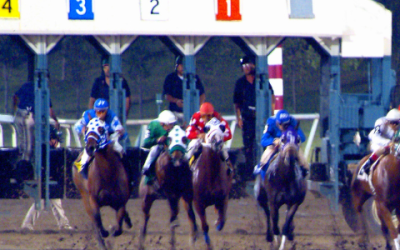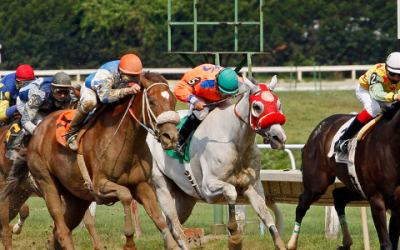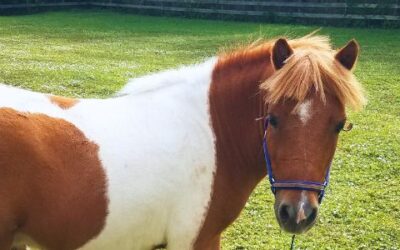
Beyond Racing: Off-the-Track-Thoroughbreds Excel in New Careers
by
Cynthia McFarland
At the racetrack, Thoroughbreds are responsible for some of the most thrilling experiences in the lives of their owners, trainers, riders and grooms.
We cheer for their hard-fought victories, root for the underdogs, cross our fingers for the favorites. We celebrate when these incredible horses bring us moments and memories we will never forget.
Compared to other disciplines, the career of a Thoroughbred racehorse is relatively short. There are always some tough, hard-knocking runners who race until they’re approaching double digits in age, but these are the exceptions. Most racing careers don’t last more than a few years, if that.
Fortunately, many Off-The-Track Thoroughbreds (OTTBs) go on to successful second, and even third careers, living productive lives and bringing joy to new owners.
In our area, OTTBS have help from some dedicated horsewomen who are committed to helping retired racehorses find happy futures and new homes.
New Vocations
A lifelong love of horses and a career as a professional rider put Erin MacDonald in the right place to help retired racehorses find new homes. And she’s making the most of it.
Born in Ontario, Erin has been riding since the age of 5. After starting in the Hunter/jumper discipline, she was intrigued by the challenge and adventure of three-day eventing and has competed in that sport since 2004. She’s even represented Canada on several junior eventing teams.
Starting in 2011, Erin was traveling to Ocala each year to compete. After falling in love with the area, in 2015, she made the decision to stay in the Horse Capital of the World®, and ride professionally here.

Photo couresty of Erin MacDonald
Erin’s world continues to revolve around horses. As a trainer and competitor, her eventing business is Trillium Sport Horses. She also has her own placement organization and works with New Vocations Racehorse Adoption Program, a 501(c)(3) nonprofit organization, which has focused on the rehabilitation, retraining and rehoming of retired racehorses since 1992.
As the largest racehorse adoption program in the United States, New Vocations has transitioned over 9,000 retired Thoroughbred and Standardbred racehorses into second careers with adopters throughout the country.
Of the many horses she’s ridden in eventing, the Thoroughbreds have always impressed Erin with their temperament, courage, and stamina. In fact, she’s currently competing on several Thoroughbred/warmblood crosses.
Erin had been retraining and placing OTTBs for private owners for some time. As she built her training business, she placed about 300 OTTBs over a period of about seven years.
“In 2016, a friend got in touch with me to help place 30-plus OTTBs,” recalls Erin. “Then people started calling me and it took off.”
In 2021, she began working with New Vocations Racehorse Adoption Program.
“They’re based in Lexington and were looking to open a satellite facility in Ocala, and looking for someone to run the program here,” says Erin, noting that 2024 is her third year of placing OTTBS for New Vocations.
“Most are 3 to 4 years old, but we do get some older ‘war horses’ once in a while,” she says.
Before any horse is offered for adoption, they are fully assessed by a veterinary team. If an ungelded male comes in, he is castrated before being offered for adoption. No stallions are adopted out.
Each horse is also assessed under saddle. Erin typically restarts them and whoever adopts the horses continues with the training for their next career.
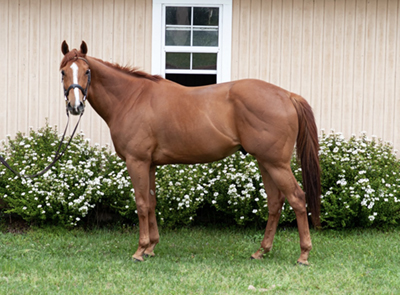
Photo couresty of Becca Bermingham
“I’ve spent time riding every horse before they leave,” she says. “I can tell you exactly who they are so they can be placed properly.”
If a horse comes in with an injury, it may take a period of rehabilitation before that individual can be ridden, assessed, restarted, and put up for adoption. Horses that need rehab are kept at nearby Thunder Ranch, not at Erin’s farm.
Other horses arrive from the track completely sound and don’t need much time before they can be put up for adoption.
“We have the complete history of each horse and they’re completely assessed by multiple professionals (including a veterinary team and trainer) for temperament, level of training and soundness before being offered to adopters,” says Erin. “Someone adopting from New Vocations knows the horse is up-to-date on everything, including hoof care, deworming and vaccination.”
“The best part is seeing these horses go on to have second careers. Most of them are retiring young. There’s so much left for them to give and enjoy. I just enjoy being part of this whole second life these horses get and setting them up for success in that.”
Erin routinely manages 25 program horses between her farm and the rehab facility, Thunder Ranch, both located in Anthony. She’s helped place 150 horses since she began working with New Vocations.
“We have the shortest length of stay in the program. Horses are typically here around 100 days before being adopted,” says Erin. “We are placing a horse a week. As soon as one is placed another one comes in; it’s a revolving door.”
In 2023, 92 days was the average length of stay at Erin’s farm for a former racehorse before being placed with an adopter.
“Last year we placed 63 OTTBs,” she says. “Most of them leave Florida. We have nice quality horses, so people are happy to ship from here.”
If you’re interested in adopting through New Vocations, you’ll appreciate that the process is designed with the horses’ best interests in mind.
“Go to the website and fill out an adoption application. You have to be approved before moving forward. We check references and the application is lengthy to ensure horses are going to the best home,” explains Erin.
“We require updates from adopters, and we follow the horses to make sure everything is going well,” notes Erin. “Once an adoption contract is completed and signed, the adopter is officially the new owner. At the 12- month mark, we will release papers, if requested.”
Part of the adoption agreement is that the horse cannot be raced again.
Erin loves helping horses through the adoption program.
“The best part is seeing these horses go on to have second careers. Most of them are retiring young. There’s so much left for them to give and enjoy,” she says. “I just enjoy being part of this whole second life these horses get and setting them up for success in that.”
Camalou Farm

For Florida native Stacey Emory, making a living with horses came naturally. Retraining and rehoming OTTBs became an extension of her love for Thoroughbreds.
Born in Jacksonville, Stacey inherited her mother’s passion for horses and began riding in elementary school.
She rode hunters and then jumpers for years.
After moving to Georgia at age 20, Stacey managed a large boarding, sales and lesson facility in Alpharetta, and eventually began riding eventers.
She retrained and rehomed her first OTTB in 1989 and has been doing so ever since. For many years, she was rehoming as many as 100 to 150 OTTBs per year.
She has worked as a vet tech for an equine veterinarian in Ocala for the past 20-plus years. Her contacts from this job have become a great resource for horses leaving the track and needing second careers.
“When I first started, I got a lot of horses from northern tracks, including Monmouth, Presque Isle Belmont, Saratoga and Churchill, but now I mostly get them via contacts from veterinary clients here in Marion County,” says Stacey, who still buys the occasional horse off the racetrack.
She doesn’t encourage people to buy a horse directly off the track unless they go with someone who is experienced and knows the right questions to ask.
“There is a full disclosure law in the state of Florida, but not everyone adheres to that. You’re supposed to disclose any previous injury or surgery you know the horse has had,” she notes.
“Yes, they’re trained to go out and run in one direction, but they’re bred to work. They’ve been working six days a week since they were 20 to 22 months old. They thrive on having a job and being doted on. They’re quite easy to teach a new job because they want to learn. There’s really nothing these horses can’t learn to do.”
When an OTTB goes on to a second career, all their experiences at the racetrack prove beneficial.
“These big tracks have concerts, parties, balloons and fireworks in the infield, so most Thoroughbreds have been exposed to more than the show horses ever will be,” she says.
Stacey says that many people have misconceptions about OTTBs, thinking they are too “hot” for amateur or youth riders, or that a horse off the track must have an injury or physical problem.
Of course, she loves to prove those breed prejudices wrong, showing how good-minded OTTBs can have incredible second careers.
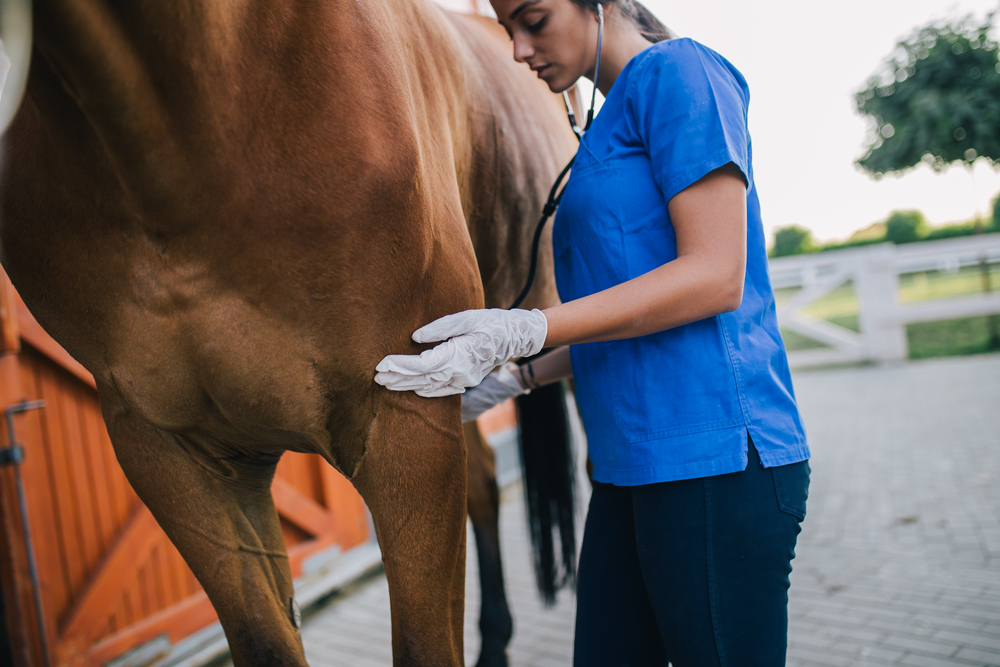
She points out that most OTTBs have incredible work ethics.
“Yes, they’re trained to go out and run in one direction, but they’re bred to work. They’ve been working six days a week since they were 20 to 22 months old. They thrive on having a job and being doted on,” she says. “They’re quite easy to teach a new job because they want to learn. There’s really nothing these horses can’t learn to do.”
Stacey has sold OTTBs for many second careers—polo, hunter/jumper, eventing, dressage, trail riding and ranch work.
She finds Thoroughbreds are the most diverse breed she’s ever worked with.
“They’re all heart. They always keep trying to do things right,” she says.
Stacey typically pays anywhere from $2,500 to $5,000 a horse off the track and that doesn’t include the cost of shipping to her farm.
“A lot of people think we get them for free, but big, sound, good-moving horses aren’t free, I don’t care what track they’re coming from,” she notes.
“One of the first things I do is x-ray feet to make sure angles are correct, and have my farrier get them right,” she says. “Some can go barefoot, and some can’t. I don’t normally put hind shoes back on them.”
If a horse has an injury, they are rehabbed and given time to heal. Others are healthy and just need a short time to unwind from life at the racetrack.
“I let the horse tell me when they’re ready to go back to work. Some are fine after a couple weeks to get on and ride a little,” says Stacy, adding that there are also horses whose minds need more time to relax.
She typically has an OTTB for four to six months before offering them for sale.

Stacey usually restarts every horse so they are going along well in a snaffle at a walk, trot and canter, but there’s much more to it than just hopping on and riding.
She says the big difference between racehorses and those trained for other disciplines is how they use their bodies.
“Racehorses aren’t working off their hind end. They don’t use their muscles the same way running on the racetrack as they will as a sport horse. It takes time for their muscles to learn a new job. They have to learn to use their hindquarters and backs because they’ve just been running and not using their bodies this way,” she explains.
Prices usually range from $5,000 to $6,000.
Some horses sell before Stacey has done any retraining just based on their videos and conformation photos. She finds that the majority are purchased as show horse prospects for English disciplines.
Stacey has never viewed her work with OTTBs as a money-making venture. For her, the most important thing is helping horses find their next career and a good home.
“I feel like I owe something back to the industry,” she says. “I’ve been selling OTTBs for the last 30 years.”
If you would like to read other equestrian related posts please be sure to check out some of our previous features.
The Peeps Foundation | Josh Dolan’s Mini Horse Mission
The Peeps Foundation Offers Hope and Practical...
Belmont 2025 | Local Contenders
The Belmont Stakes is the final showdown of the...
Preakness 2025 | Local Contenders
The field is shaping up for the May 17 Preakness...
Kentucky Derby 2025 | Marion County Connections
If you hang around long enough with horse...
Pint-size Companions Deliver Full-Sized Fun
Photo Courtesy of Stacy Furgang, DMVPint-size...
Community Spotlight | Law Enforcement on Hooves
Law Enforcement on Hooves: Mounted Units at Home...


